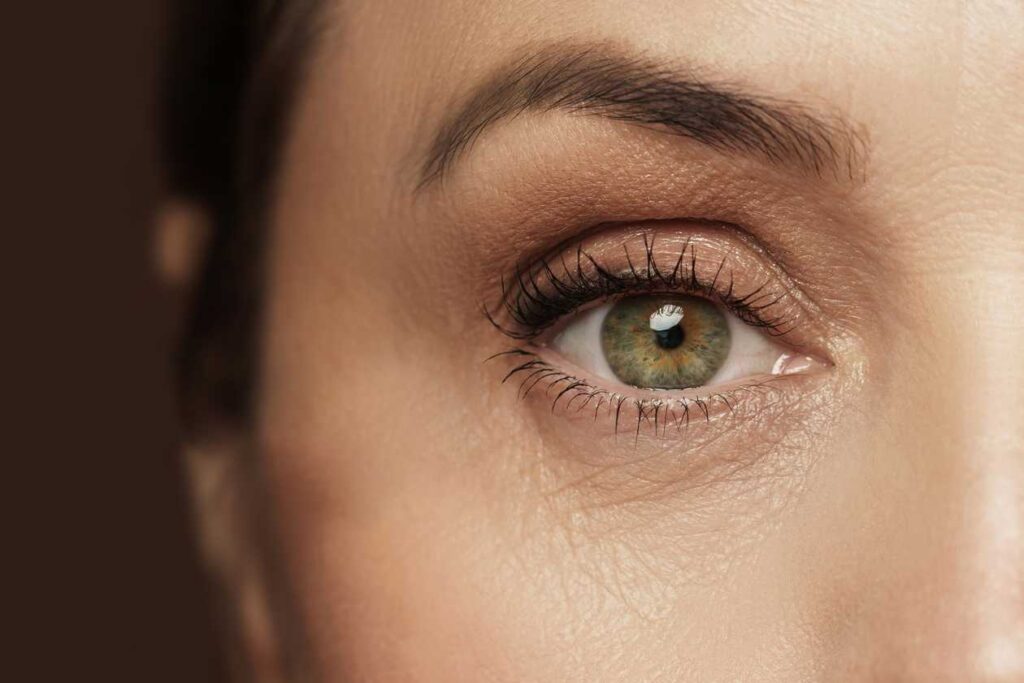The quest for the perfect skincare regimen often leads us to the elusive search for the best eye cream. With countless products promising to erase wrinkles, reduce puffiness, and diminish dark circles, navigating the world of eye creams can be overwhelming. However, armed with knowledge about ingredients, formulations, and individual skincare needs, finding the right eye cream can become a rewarding journey.
In this comprehensive guide, we’ll delve into the science behind eye creams, explore key ingredients to look for, examine different formulations, and provide a curated list of top-rated products. Whether you’re targeting fine lines, dark circles, or under-eye puffiness, this article aims to equip you with the information needed to make an informed decision and achieve radiant, youthful-looking eyes.
Understanding the Science Behind Eye Creams
The skin around the eyes is delicate and prone to various signs of aging due to factors such as sun exposure, genetics, and lifestyle habits. Unlike the rest of the face, the skin around the eyes is thinner, contains fewer oil glands, and is more susceptible to damage and dehydration. Consequently, specialized care is required to address specific concerns such as wrinkles, puffiness, and dark circles.
Eye creams are formulated with ingredients tailored to address these concerns effectively. From hydrating agents like hyaluronic acid to antioxidants such as vitamin C and retinol, these products aim to nourish, protect, and rejuvenate the delicate eye area. Additionally, specialized formulations may contain ingredients like caffeine to reduce puffiness and peptides to stimulate collagen production, thereby improving skin elasticity and firmness.
Key Ingredients to Look For
When selecting an eye cream, it’s essential to pay attention to the ingredients listed on the label. Here are some key ingredients to look for and their respective benefits:
Hyaluronic Acid: Known for its excellent hydrating properties, hyaluronic acid helps plump and moisturize the skin, reducing the appearance of fine lines and wrinkles.
Retinol: A derivative of vitamin A, retinol stimulates collagen production, promotes cell turnover, and diminishes the signs of aging such as wrinkles and crow’s feet.
Vitamin C: An antioxidant powerhouse, vitamin C brightens the skin, reduces hyperpigmentation, and protects against free radical damage caused by environmental stressors.
Peptides: These amino acid compounds stimulate collagen synthesis, leading to improved skin firmness and elasticity, thereby reducing the appearance of fine lines and wrinkles.
Caffeine: Known for its vasoconstrictive properties, caffeine helps reduce under-eye puffiness by constricting blood vessels and reducing fluid retention.
Niacinamide: Also known as vitamin B3, niacinamide helps strengthen the skin barrier, improves moisture retention, and reduces inflammation, making it effective for addressing dark circles and fine lines.
Formulations and Texture
Eye creams come in various formulations and textures to cater to different skin types and preferences. While some prefer lightweight gel or serum-like textures that absorb quickly without leaving a greasy residue, others may opt for richer creams or balms for added hydration and nourishment, especially during the night.
For those with oily or combination skin, water-based gel formulations are often preferred as they provide hydration without clogging pores or feeling heavy on the skin. Conversely, individuals with dry or mature skin may benefit from richer formulations containing emollients and occlusives to lock in moisture and restore the skin’s natural barrier function.
It’s also important to consider the application method when choosing an eye cream. Some products come with specialized applicators such as metal rollerballs or ceramic tips, which can help massage and depuff the under-eye area while enhancing product absorption. Additionally, practicing gentle tapping or massaging motions during application can further promote circulation and lymphatic drainage, reducing puffiness and enhancing the overall efficacy of the product.
Top-Rated Eye Creams
Now that we’ve covered the science behind eye creams and highlighted key ingredients and formulations to look for, let’s explore some top-rated products that consistently receive rave reviews from skincare enthusiasts and experts alike:
La Mer The Eye Concentrate
Key Ingredients: Miracle Broth™, Lime Tea Concentrate, Marine De-Puff Ferment™
Formulation: Rich cream
Benefits: Hydrates, reduces puffiness, diminishes dark circles, smooths fine lines and wrinkles
Skinceuticals A.G.E. Eye Complex
Key Ingredients: Proxylane™, Blueberry Extract, Optical Diffusers
Formulation: Cream
Benefits: Improves skin elasticity, reduces wrinkles and crow’s feet, brightens under-eye area
Drunk Elephant C-Tango™ Multivitamin Eye Cream
Key Ingredients: Vitamin C, Peptides, Cucumber Extract
Formulation: Lightweight cream
Benefits: Brightens, firms, and hydrates the delicate eye area, reduces the appearance of fine lines and wrinkles
Sunday Riley Auto Correct Brightening and Depuffing Eye Contour Cream
Key Ingredients: Caffeine, Brazilian Ginseng Root Extract, Watermelon Rind Extract
Formulation: Lightweight gel-cream
Benefits: Depuffs, brightens, and hydrates, reduces the appearance of dark circles and fine lines
Olay Eyes Brightening Eye Cream
Key Ingredients: Niacinamide, Vitamin C, Caffeine
Formulation: Lightweight cream
Benefits: Reduces dark circles, hydrates, and brightens the under-eye area, smooths fine lines and wrinkles
Conclusion
Finding the best eye cream is a highly personalized journey that requires understanding your skin’s unique needs, preferences, and concerns. By familiarizing yourself with key ingredients, formulations, and application techniques, you can narrow down your options and select a product that delivers visible results.
Whether you’re targeting fine lines, dark circles, or under-eye puffiness, incorporating a high-quality eye cream into your skincare routine can make a significant difference in the appearance and health of your skin. Remember to be patient and consistent with your application, and don’t hesitate to consult with a dermatologist or skincare professional for personalized recommendations.







